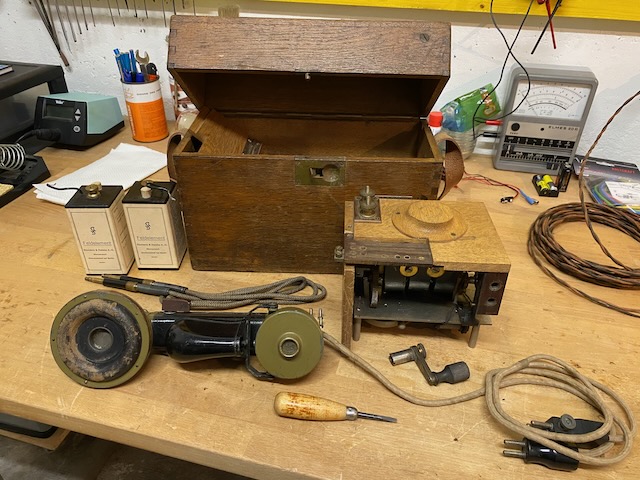
Find more details on German field telephone history on the German Field Telephones Timeline.
The Feldfernsprecher 16/34 consists of an Eiserner Armeefernspecher handset combined with a magneto/ringer set from a Tischfernsprecher OB 05, all housed within a box that also contains two 1.5V field elements. Based on the type of components used and the overall finish, the device appears to have been produced in a workshop-style manufacturing process. However, the included diagram—printed on a metal plaque—suggests that it may not be a one-off construction but rather part of a small production batch.
The device is marked with "RNW Berlin", though its significance remains unclear. I have yet to determine what this marking represents. Any feedback is welcome. A possibility may be that the Feldfernsprecher 16/34 was manufactured as training equipment for the Reichswehr or for a German paramilitary or civil defence organisation in the early 1930s. However, none of the known organisations from that period appear to have used the abbreviation "RNW". It may also been used in some industry or a railway. There is also no known telephone material manufacturer called "RNW" afaik. The "handset" (Eiserner Armeefernspecher) is marked with "Siemens & Halske".
Feature-wise it is similar to the then still used Feldfernsprecher 16 and Feldfernsprecher 17 [1]. The "Eiserner Armeefernsprecher" which is used as handset provides the speech coil and the buzzer. In the wooden box there is space for two 1,5V field elements. The inset is built around a magneto/ringer setup taken from old "Tischfernsprecher OB 05" stations and has added a "Vermittlungsklinke" (switching socket, to connect another instrument to the connected line) and an "Anschlussklinke" (connection socket, to connect the instrument to a line from another instrument).
Disassembled.

The diagram is mounted inside the top lid.
It shows the "Eiserner Armeefernsprecher" as "Handapparat 16" (handset 16), and it shows that the complete set's designation is "Feldfernsprecher 16/34".
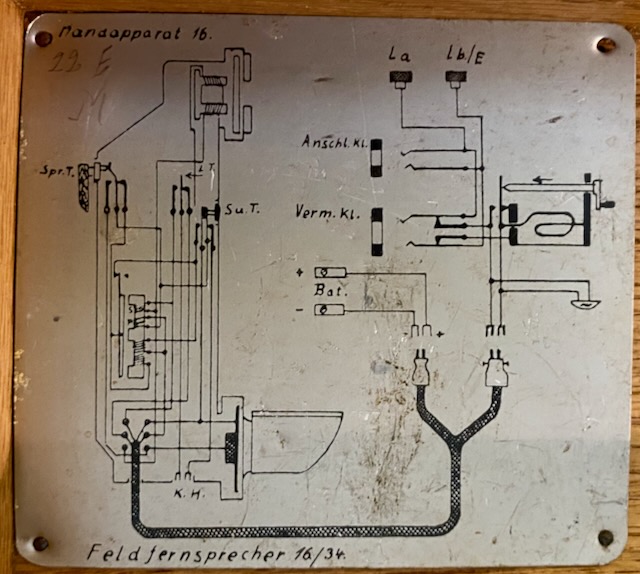
The spelling table lettered in "Fraktur" attached to the top lid uses the early "nazified" version (Anton instead of Adolf, Dora instead of David, Nordpol instead of Nathan and other changes), the same versions were used on the early versions of the "Feldfernsprecher 33".
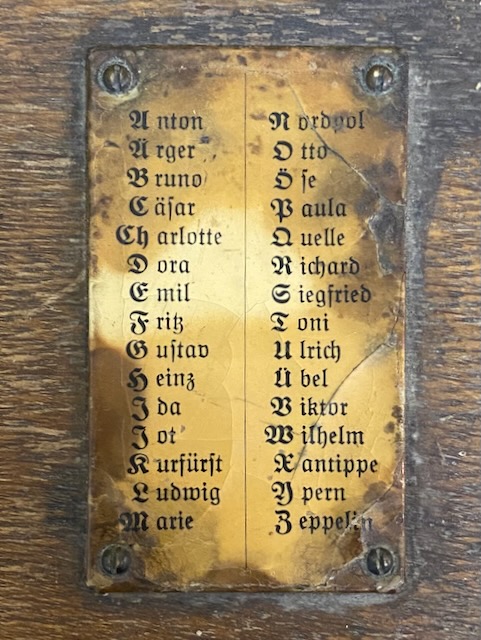
The handset is a reused "Eiserner Armeefernsprecher".
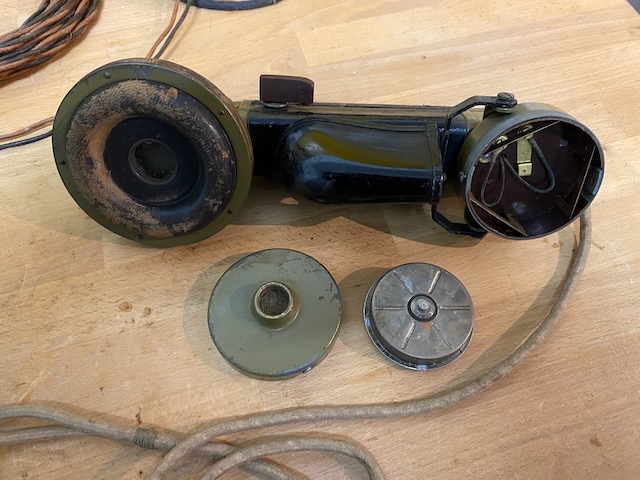
The handset is of "Siemens & Halske" make.
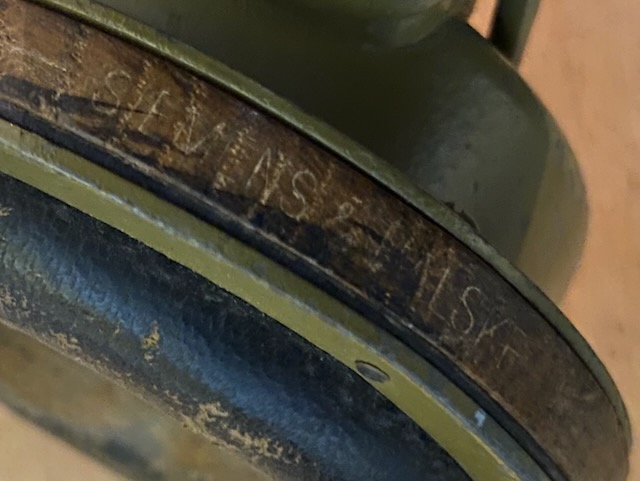
The chassis out of the box.
It is fixed in the box from below with 4 screws.
Top left the line binding posts.
In front the two handset socket pairs, on the left the battery (K for "Kohle", carbon, Z for zinc)sockets, to the right the line sockets.
On the front the two line sockets "Anschlussklinke" and "Vermittlungklinke".
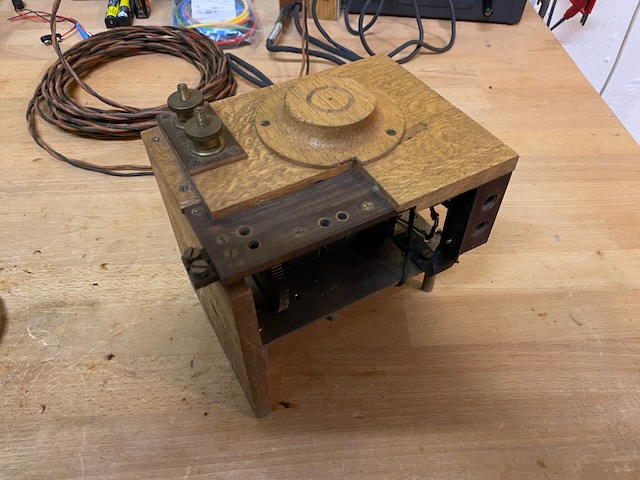
The magneto and the ringer are mounted upside down below the top wood.
The handset line connection sockets have an artisanal vibe.
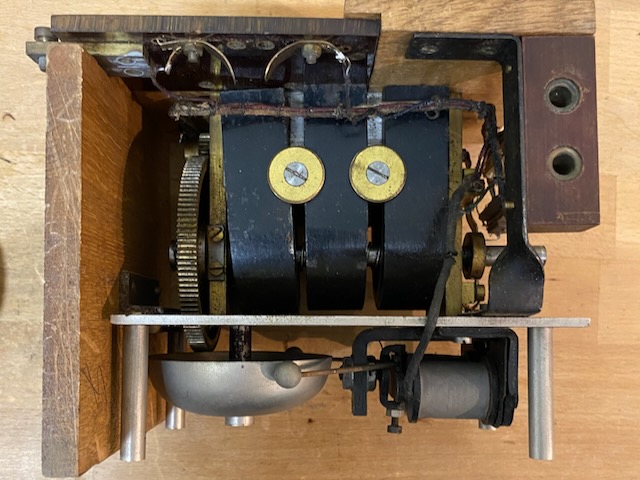
The 2x 300Ohm ringer setup with two clappers hitting one bell.
The whole chassis is fixed to the box bottom with screws reaching through the box to these four stems.
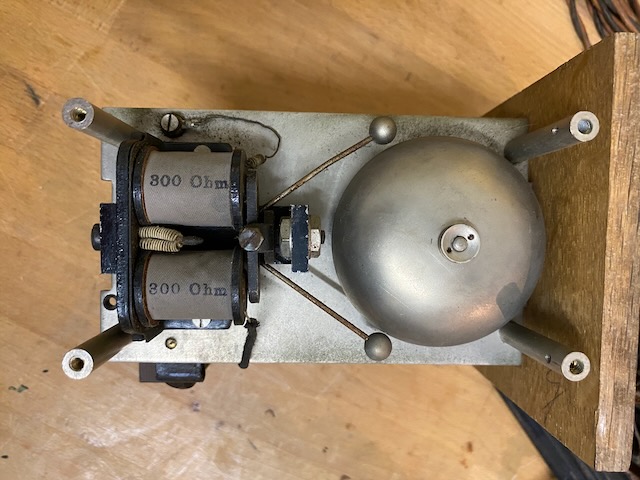
The magneto shaft and the two line sockets.
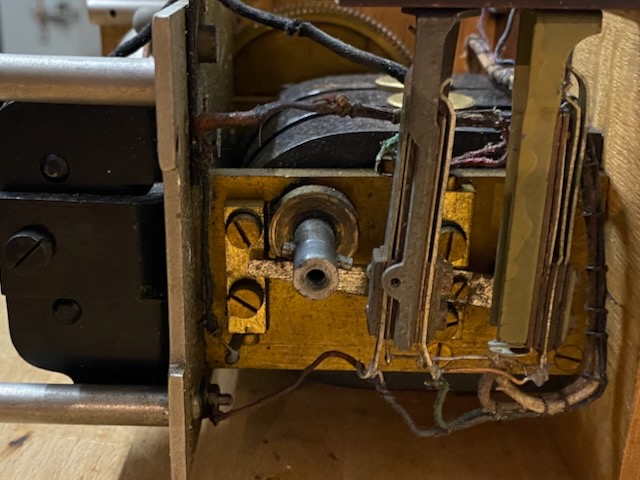
The magneto ringer setup is taken from an old "Tischfernsprecher OB 05" and mounted upside down.
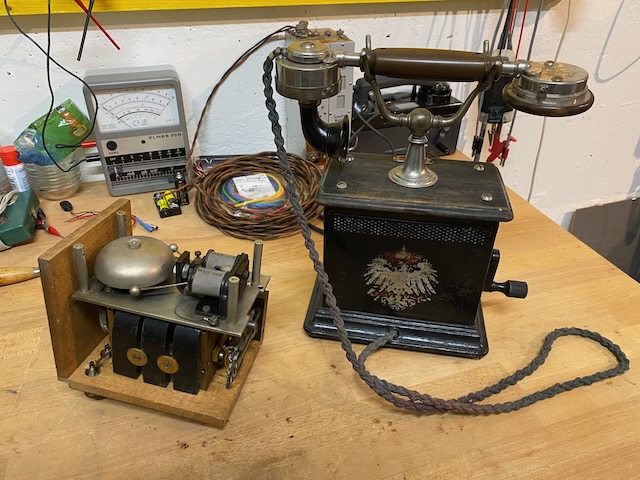
The magneto ringer setup is taken from an old "Tischfernsprecher OB 05" and mounted upside down.
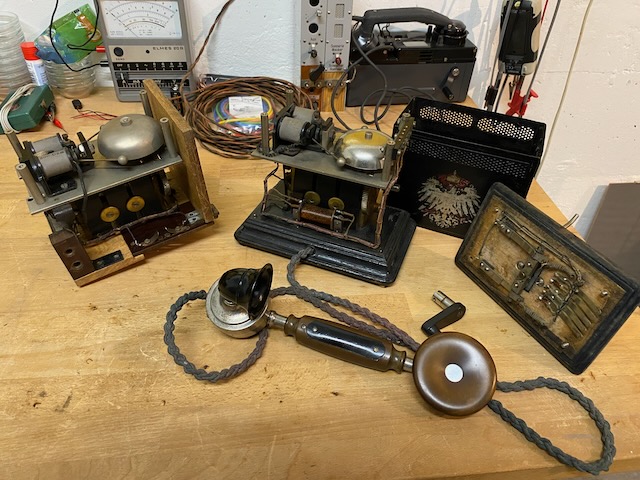
The empty box.
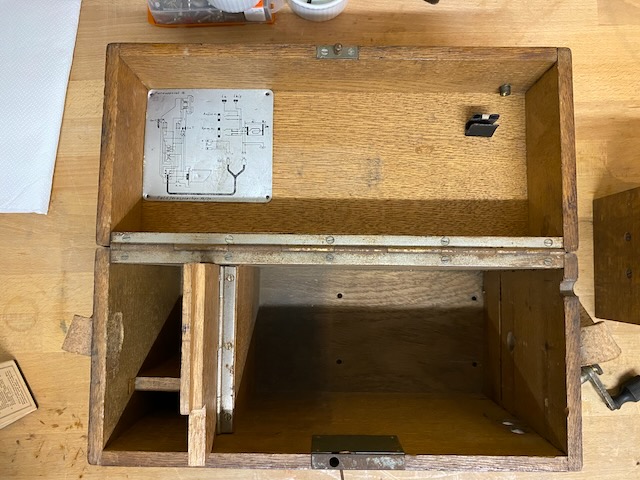
The battery elements mounted.
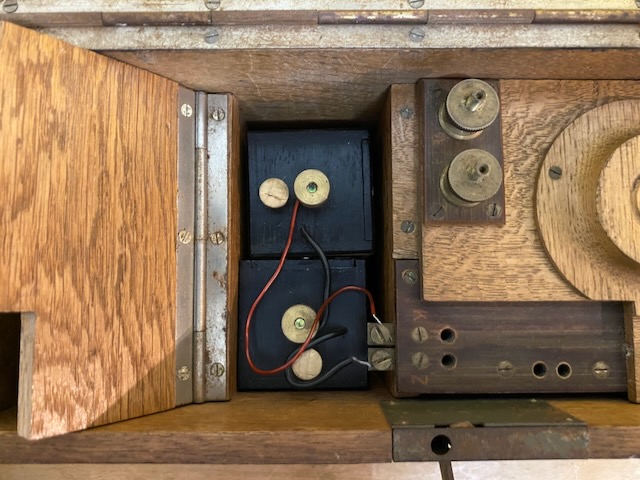
The handset battery and line plug connected.
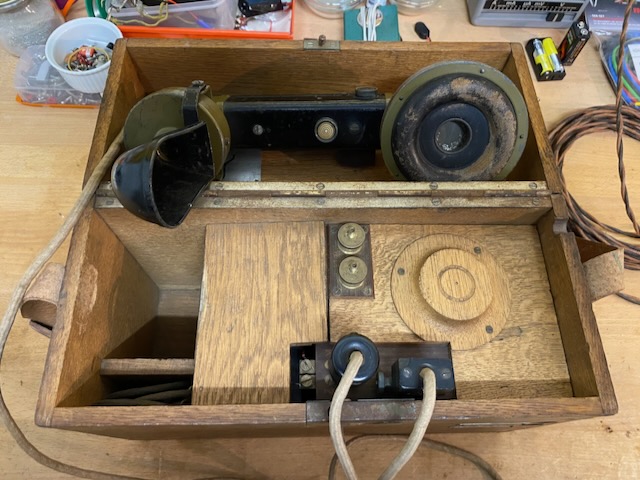
The handset battery and line plug connected.
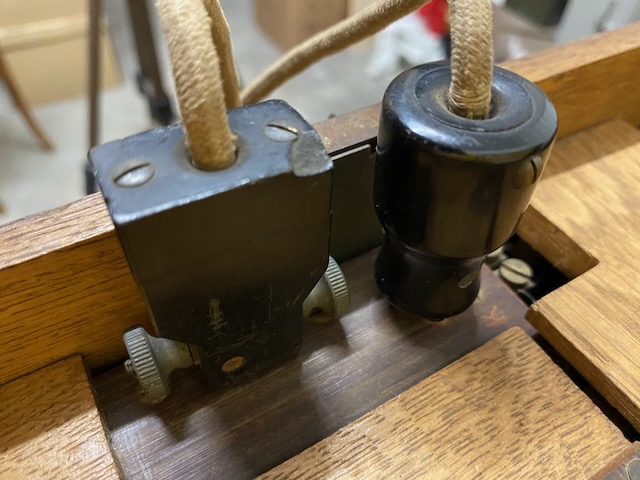
Ready to use.
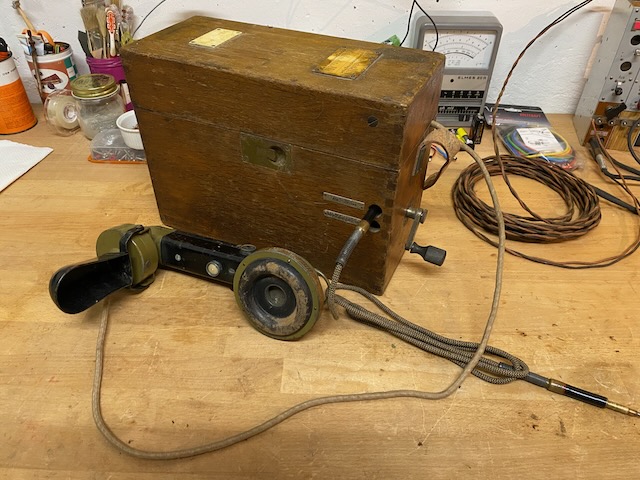
Handset, patchcord and magneto crank neatly stored.
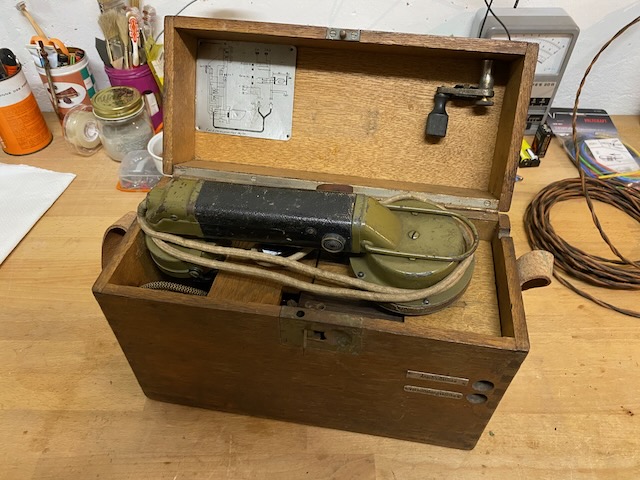
Ready for transport.
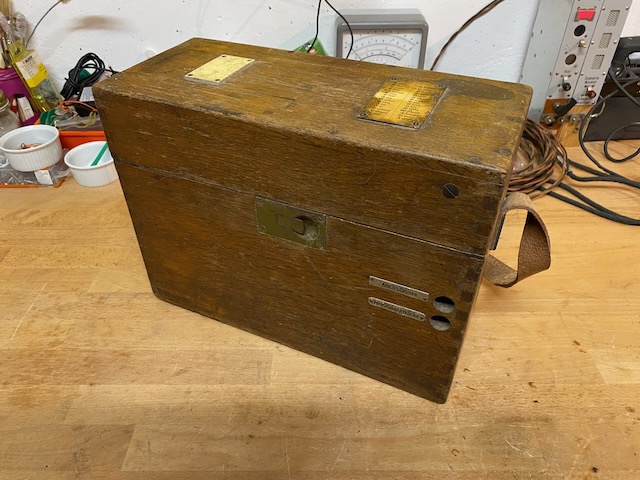
On the top lid a label to mark the connceted line and the spelling table.
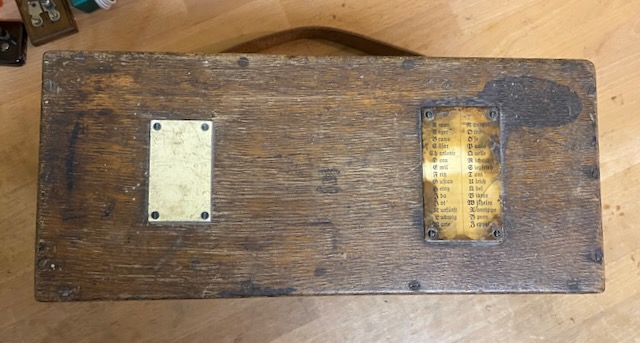
"Anschlussklinke" (connection socket, to connect the instrument to a line from another instrument) and "Vermittelungsklinke" (switching socket, to connect another instrument to the connected line).
Interesting spelling for "Vermitt-E-lungsklinke" which normally would be spelled "Vermittlungsklinke" (without the e between "mitt" ans "lung").
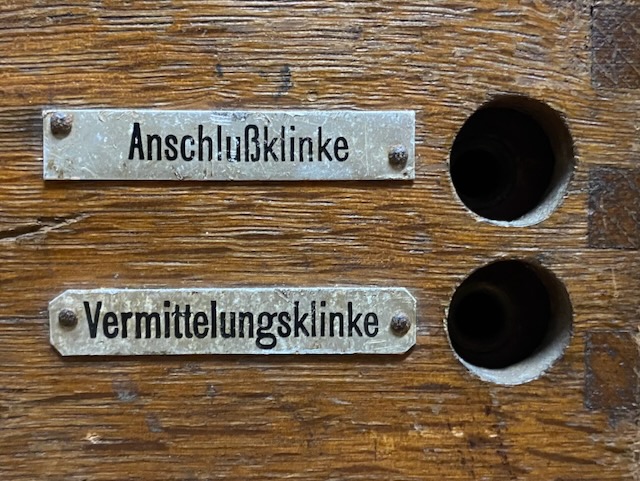
Made by or for "RNW Berlin".

Creative Commons Attribution-ShareAlike 4.0 International License